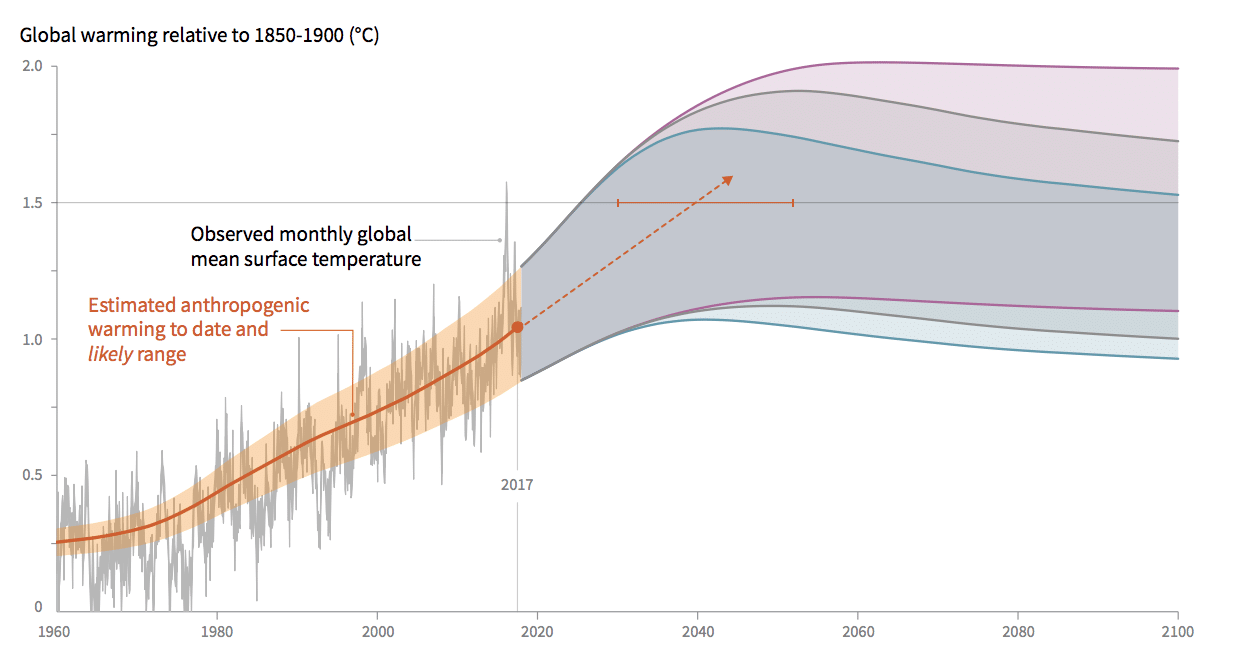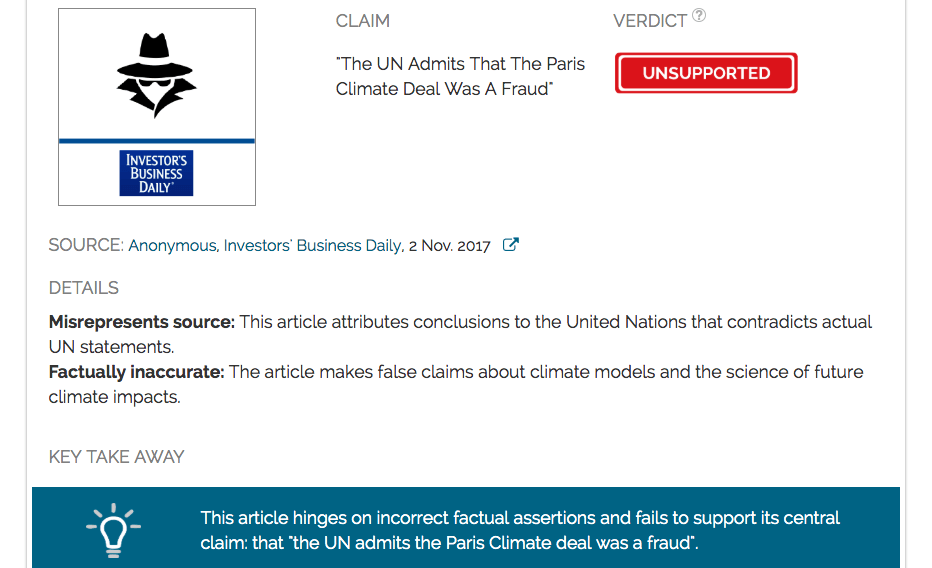Rand Paul argument for withdrawing from Paris climate agreement based on flawed information, Prof. Gary Yohe explains

On May 22, 2017, Fox News published an opinion piece by Senator Rand Paul arguing that the United States should withdraw from the Paris Agreement. Sen. Rand Paul’s opinion relies on the claim that the Paris Agreement would achieve little in the way of halting climate change and would cost American jobs. This claim originates from a report commissioned by ACCF (an American think tank and lobbying group) and prepared by a consulting firm, not an academic institution.
Professor of economics Gary Yohe explains that the claim Sen. Rand Paul relies on is flawed and not consistent with current scientific knowledge.
Guest post by Gary Yohe, Huffington Foundation Professor of Economics and Environmental Studies, Wesleyan University
Senator Paul’s opinion piece includes several sentences to which I take strong exception. The first four appear together in his third paragraph:
“So what did Obama sign us up for in exchange for maybe reducing global temperature by 0.2°C by 2100? Experts predict that by 2040, the agreement could cost us 6.5 million lost jobs—a number significantly larger than the entire population of Kentucky. It will cost us $3 trillion in lost GDP. For each household, the average annual lost income could be as high as $4,900.“
Let us take the first sentence by itself; it reads:
“So what did Obama sign us up for in exchange for maybe reducing global temperature by 0.2°C by 2100?”
This statement is incorrect. Figure 1 appropriated from Fawcett, et al (2015)* displays the nuances of correctly projecting the impact of the Paris Accord through 2100. Business as usual creates an emission trajectory that rapidly passes by 80 gigatons of CO2 per year by 2070; the likelihood of seeing warming less than 3 °C through 2100 along this path is 10% with a median of more than 4 °C. Abiding by the Paris Accord through 2030 and continuing its momentum through 2100 would increase that likelihood to nearly 60% with a median somewhere around 2.5 °C – a reduction of approximately 1.5 °C and not 0.2 °C.
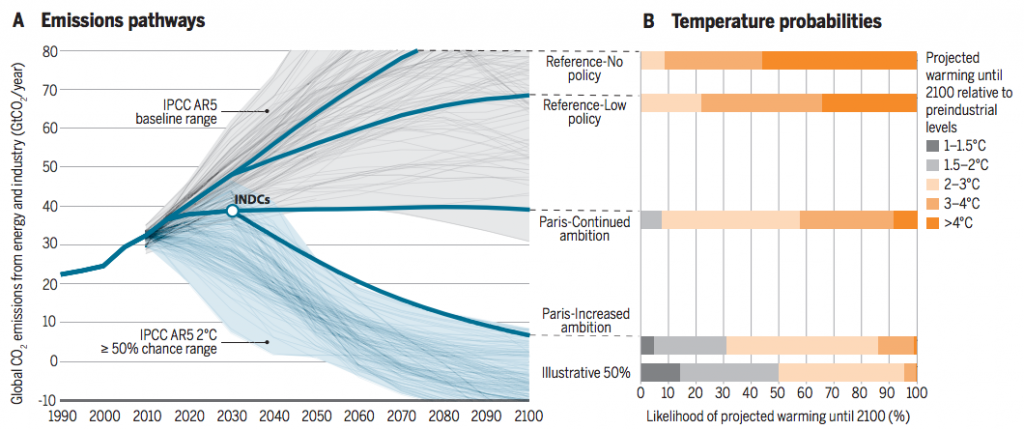
Figure 1 — Ranges of emissions scenarios with and without the Paris Accord through 2030 and beyond. The bars on the right indicate distributions of warming through 2100, and the trajectories show a no policy case as well as a modest policy, the Paris Accord extended, and an accelerated policy case. Source: Fawcett (2015)
- Fawcett et al (2015) Can Paris pledges avert severe climate change? Science
Increases in global mean temperature are driven by cumulative greenhouse gas emissions over very long periods of time. This simple, and well-established truth means that near-term reductions in emissions (like those indicated in the Paris Accord) actually remove the most damaging molecules of heat-trapping gases from any long-term trajectory of emissions. As a result, they are first in line to reduce the likelihoods of the potentially catastrophic consequences of increases in global mean temperature that could, if we do nothing, reach 3 °C by mid-century and more than 4 °C by the turn of the century unless we take action, now.
The next three sentences read:
“Experts predict that by 2040, the agreement could cost us 6.5 million lost jobs—a number significantly larger than the entire population of Kentucky. It will cost us $3 trillion in lost GDP. For each household, the average annual lost income could be as high as $4,900.“
This statement presumably refers to a report that was commissioned by the American Council for Capital Formation from NERA Economic Consulting. In doing so, Senator Paul is guilty of having his mind made up and finding a group of economists who will produce numbers that support his view. The numbers he quotes are from an analysis that adds new meaning to the term “business as usual”. They look to frame their vision of the future on the basis of static behavior across major sectors of the economy; i.e., they do not allow their sectors to adapt their business operations in response to changes in their economic environment. This allows the analysis to report prices for carbon that vary by orders of magnitude across 4 major sectors and leads them to expecting investment to fall by nearly 20% at a time when increasing investment in alternative energy and new production technologies would allow them to grow their profits and support more jobs. The reported losses in jobs, GDP, and personal income are the result of these rigid assumptions and not their similarly rigid depictions of how the US would implement its plan to meet its Paris Accord target.
Rather than quote a different report from a different set of experts that show economic growth in both GDP and employment (though they exist, doing so would fall into the same ordering trap as the Senator), let’s look at the recent experience in the United States. Figure 2 shows that US carbon emissions have fallen by 14% since 2006, a period of time during which the unemployment rate also fell from nearly 9% to around 4.4% and the annual rate of GDP growth climbed to the historically normal range of 1.5% to 2%.
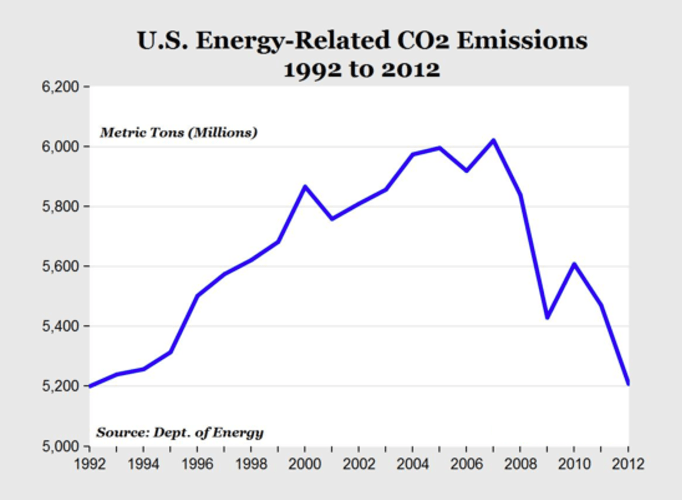
Figure 2 — Energy related carbon emissions for the United States (1992-2012)
Figure 3 shows emissions falling in California by nearly 8% since 2008 partly in response to a cap and trade program that has generated $4billion in revenue—revenue that has been used to support investment in adaptation and simultaneous expansion of the employment of less carbon intensive and/or carbon free sources of energy at scale. Over the same period, California GDP has climbed by nearly 10%. These simple economic observations contradict the Senator’s claims.
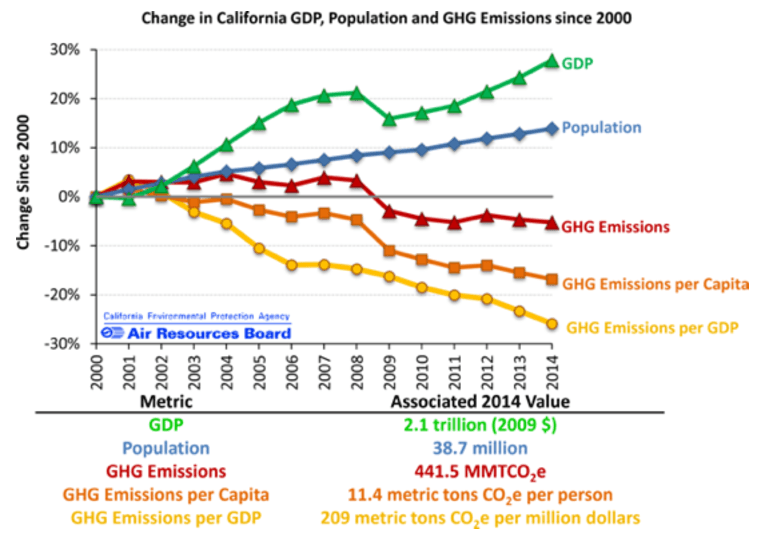
Figure 3 — Change in California GDP, population, and GHG emissions since 2000. Source: California Air Resources Board, 2015
Is energy transformation on the scale envisioned by those who support the Paris Accord economically feasible? “Yes”, is the simple answer. To see why, look at the current energy mix displayed in Figure 4. Figure 5 depicts projected mixes for 2050 after aggressive emissions reductions across the United States that are consistent, through 2030, with our Paris Accord target and indicates the feasibility of maintaining momentum along the lines displayed by Fawcett, et al. through 2050. Every technology needed to support the Figure 5 portraits across 5 different economic models is currently available at low cost when adopted in due course in a world where carbon is growing predictably more scarce; and taken together, they show that the rigidity of the results quoted by Senator Paul are mere hyperbole.
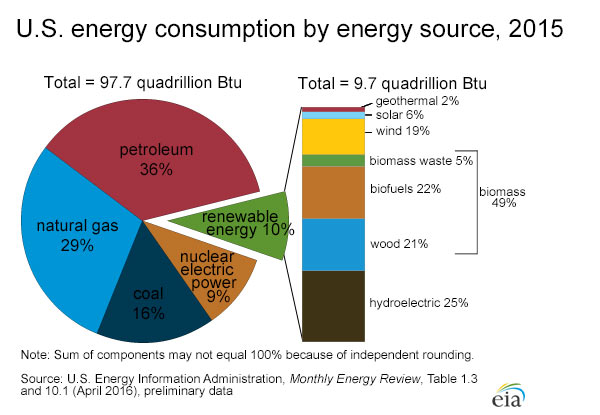
Figure 4 –Energy mix history of the United States. Source: US EIA Energy Review Monthly, April 2016.
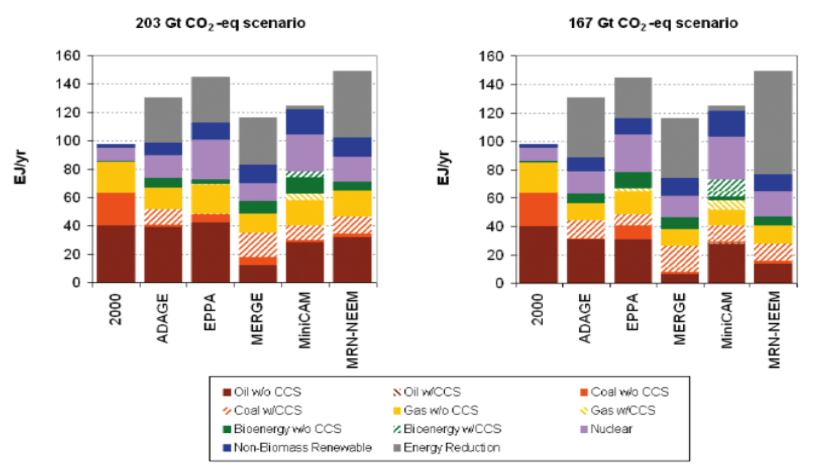
Figure 5 — Projected energy mixes for the United States in 2050 with two aggressive emissions targets. Source: Limiting the Magnitude of Future Climate Change, America’s Climate Choices, National Research Council, 2010.
The table below reports renewable energy employment numbers for 2016. There are currently more than 416,000 people employed in this growing sector across the United States, but we nonetheless rank third in the world behind China and Brazil and barely ahead of India. Renewables will be the growth sector of the first half of this century, and pulling out of the Paris Accord would reduce investment incentives in the United States. Leaving the Accord would thereby limit employment growth opportunities. It is here that the future employment of those displaced by the contraction of, for example, the coal industry, would otherwise be found.
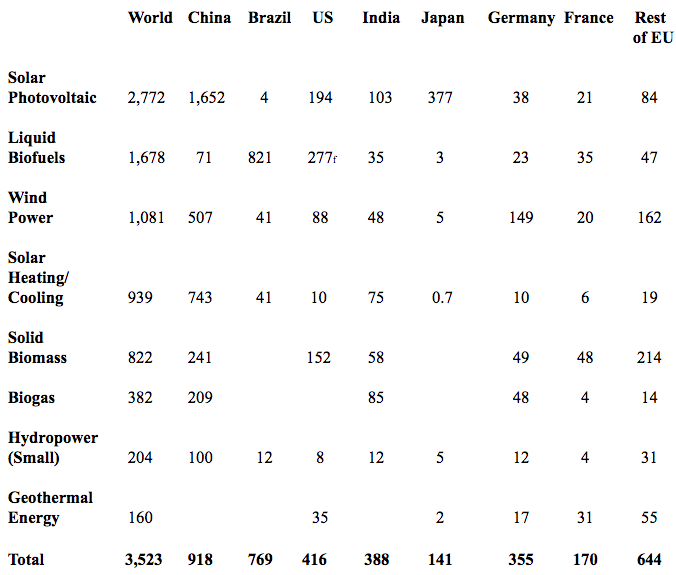
Table – Estimated direct and indirect jobs in Renewable Energy worldwide by Industry (thousands of jobs). Source: International Renewable Energy Agency, Annual Review, 2016
Finally, perhaps the best evidence that Senator Paul is incorrect here can be found in the opinions of major business leaders from across the nation. The Chief Executive Officers of Apple, BHP Billiton, BP, DuPont, General Mills, Google, Intel, Microsoft, National Grid, Novartis Corporation, Rio Tinto, Schneider Electric, Shell, Unilever, and Walmart have called on the President to stay the course with respect to United States participation in the Paris Accord. They have done so because they see potential advantages to their bottom lines by acting to reduce material risks that will increasingly be driven by accelerating climate change. Risks to their production locations, their supply chains, and their demand sides are derived from the same sources of climate change risks that individuals across the country have already experienced: extreme weather events that will grow in intensity and frequency, e.g. extended periods of drought and wildfires, severe heat waves, rising seas and coastal storm surge, and the like. They know what the Senator does not: for all of these reasons, they agree that the last sentences of the first highlighted paragraph authored by Senator Paul are not only incorrect, they are profoundly misguided.
Lastly, Senator Paul argued that:
“The federal government should be beholden to one authority and one authority alone—our Constitution—and not some U.N. bureaucrats.”
The Paris Accord does no such thing; it does not make the United States “beholden” to some “U.N. bureaucrats”. Bureaucrats did not craft the Accord and bring it into force on November 4, 2016. Nations did, and 195 signatories certainly hope that the United States keeps its word and continues to play a leading role in confronting the growing climate risks that threaten our common future. The Constitution clearly calls, in its very first sentence, that the People of the United States be committed to “promot(ing) the general welfare” – to “provide for the common defense” by protecting ourselves and others by any possible means from unnecessary threats of harm from every source imaginable.

